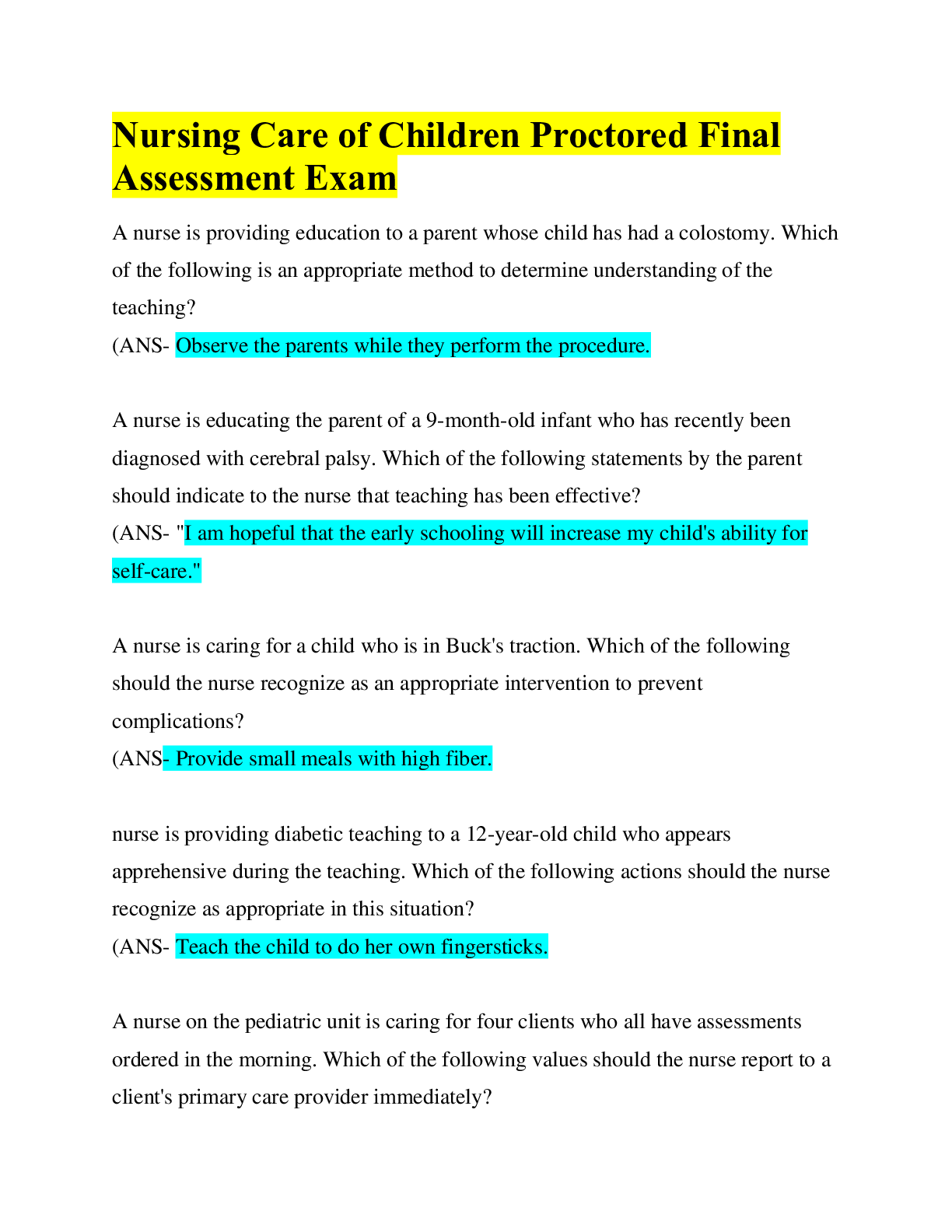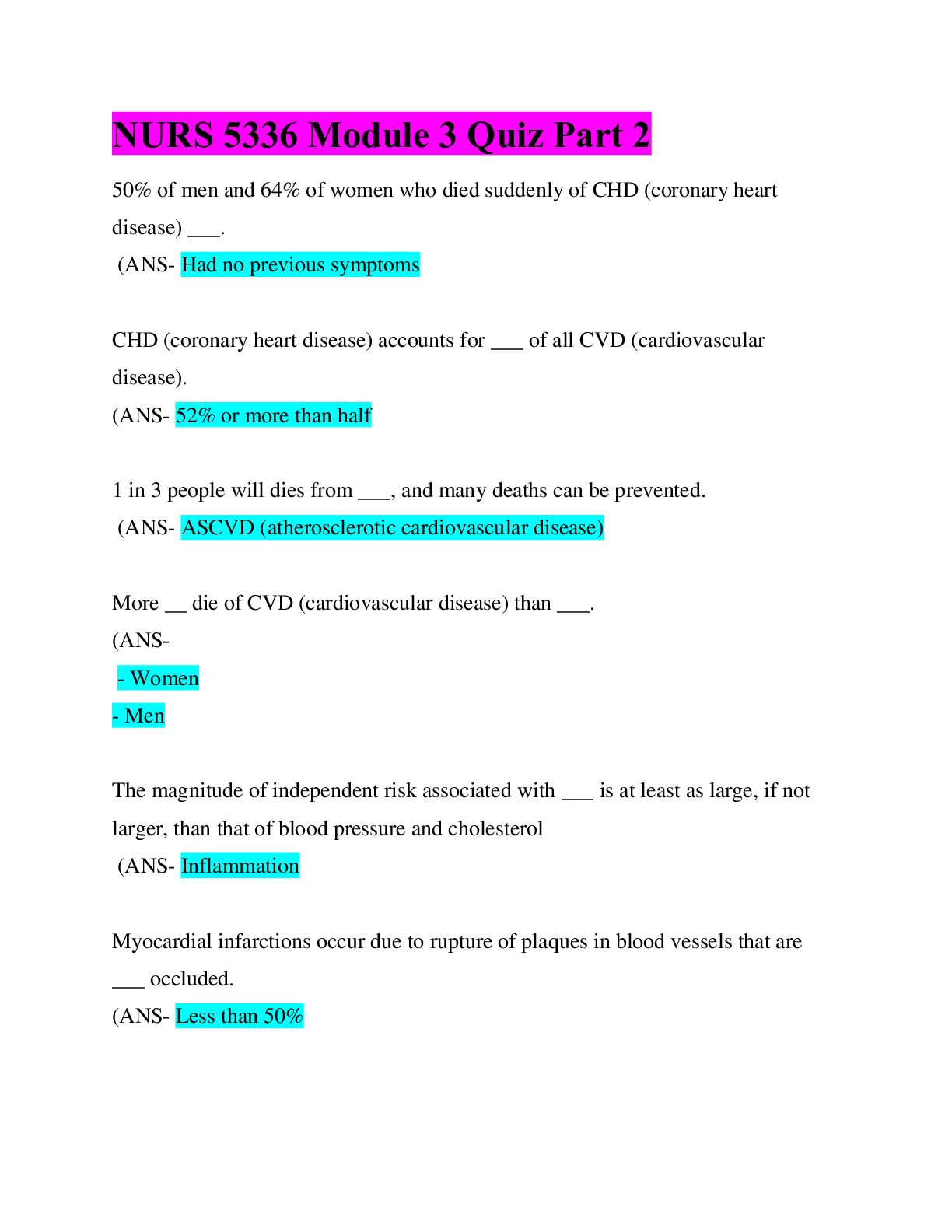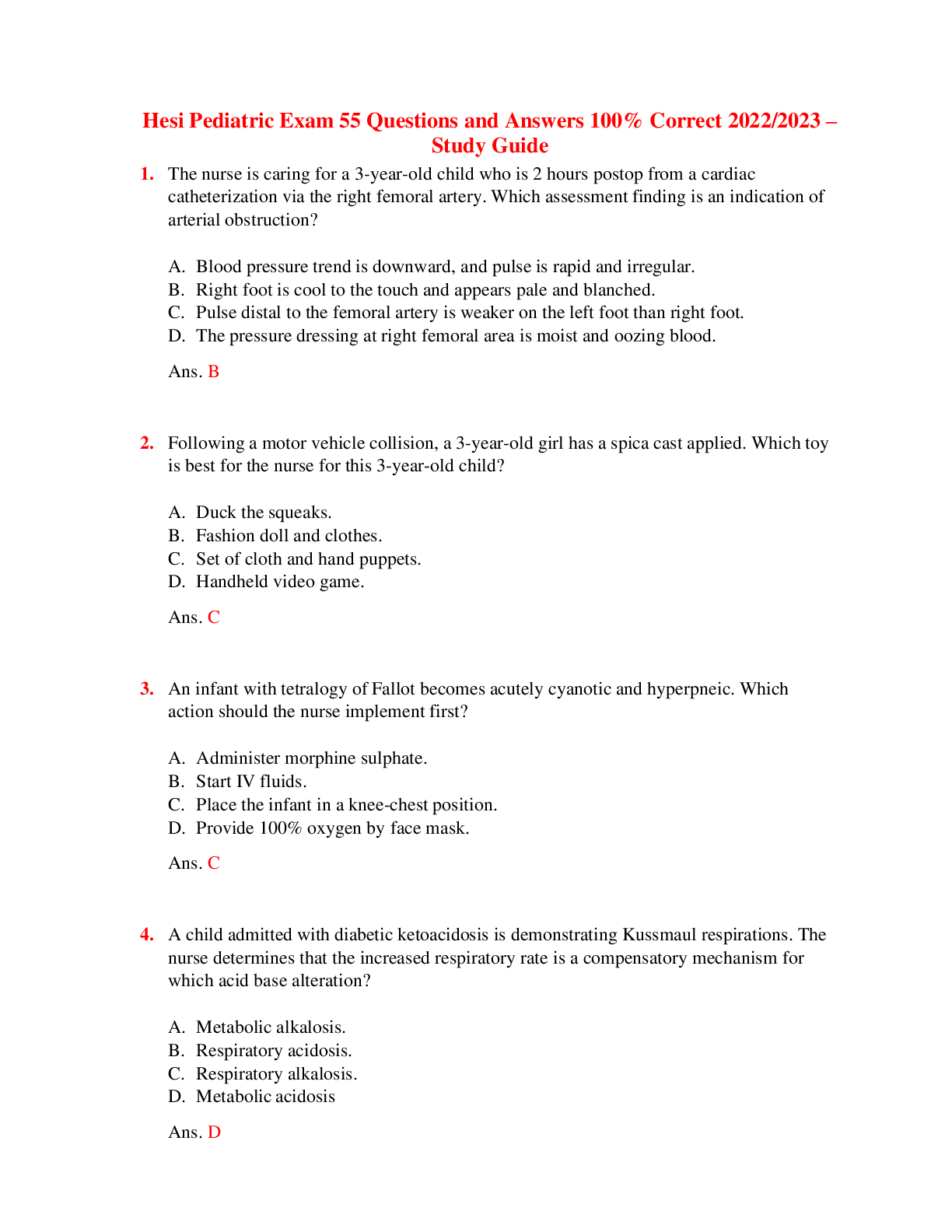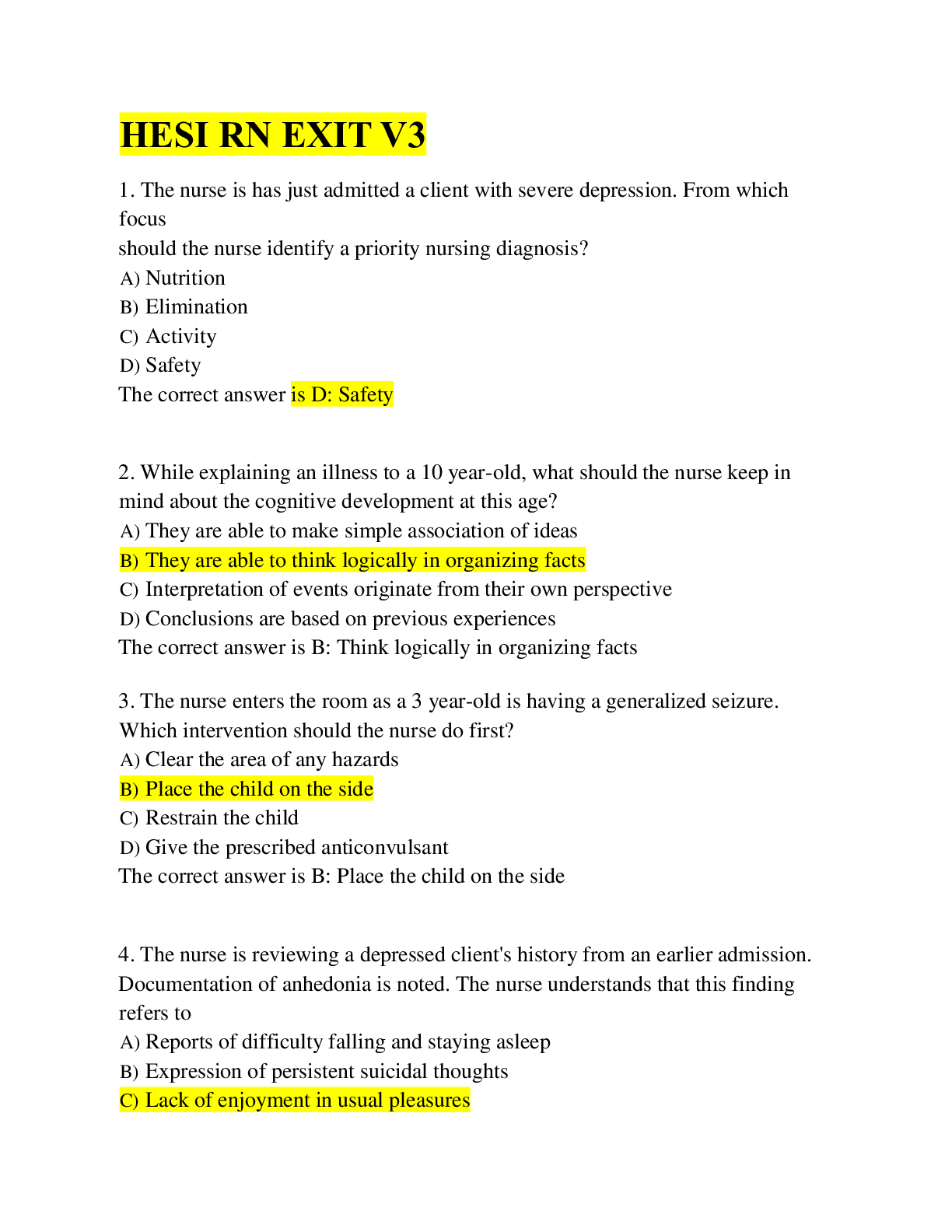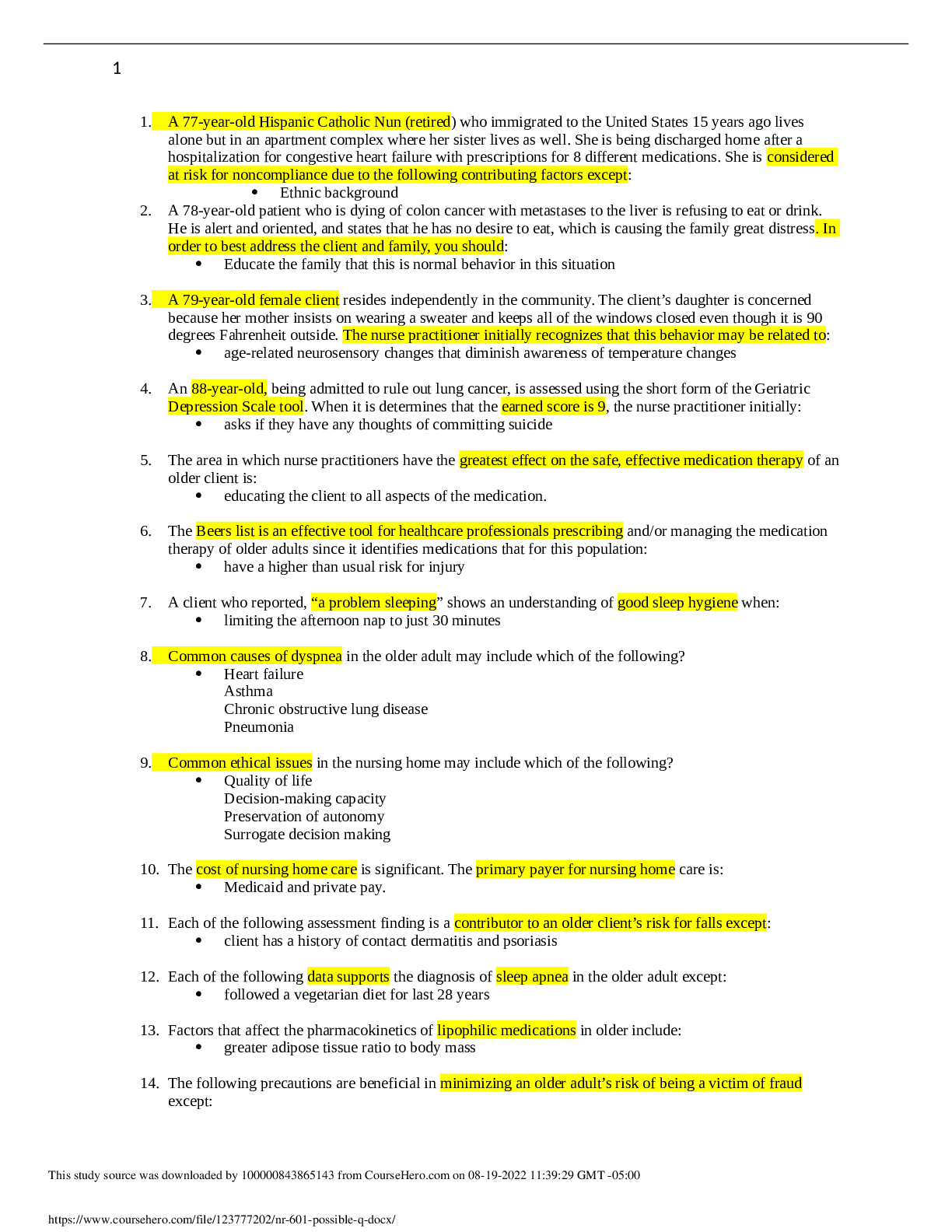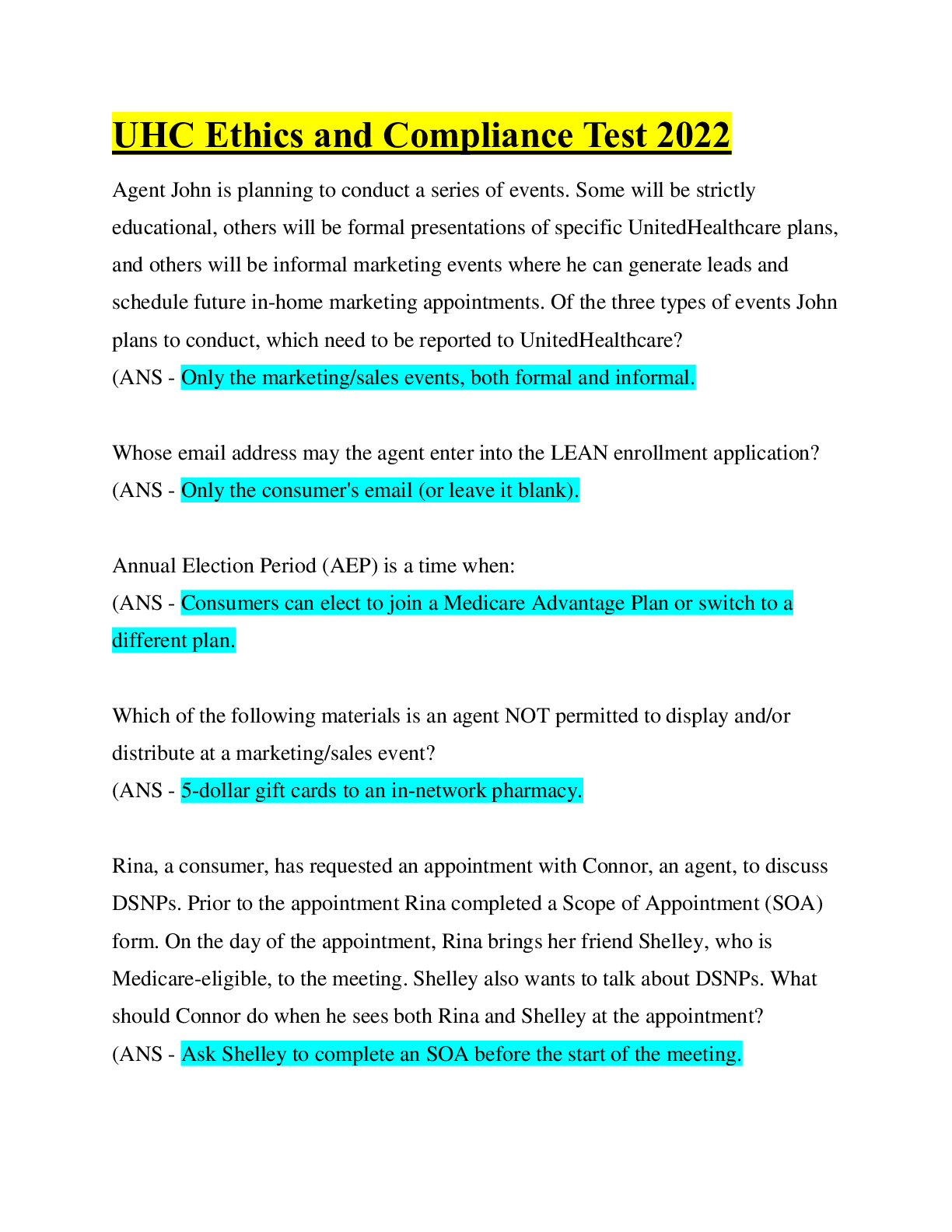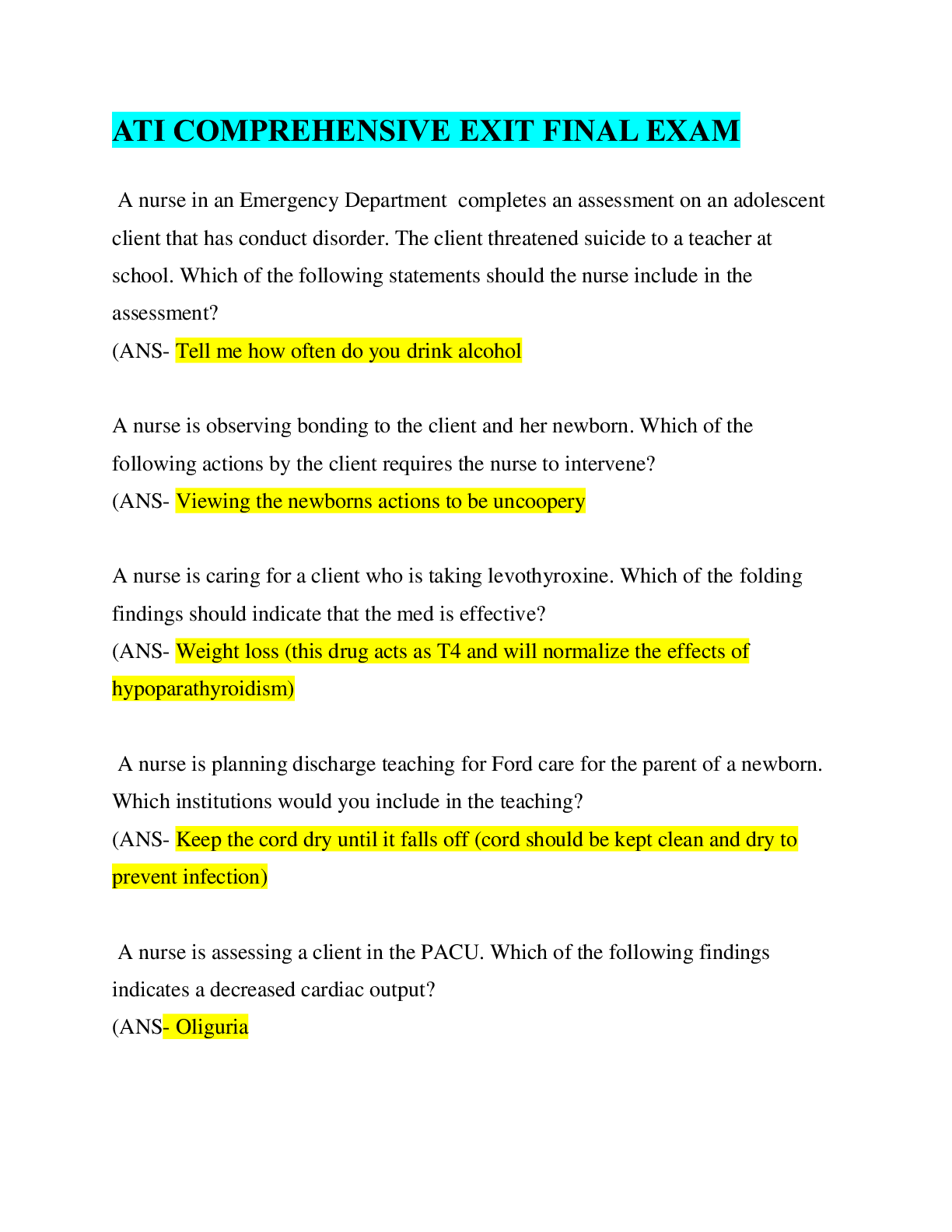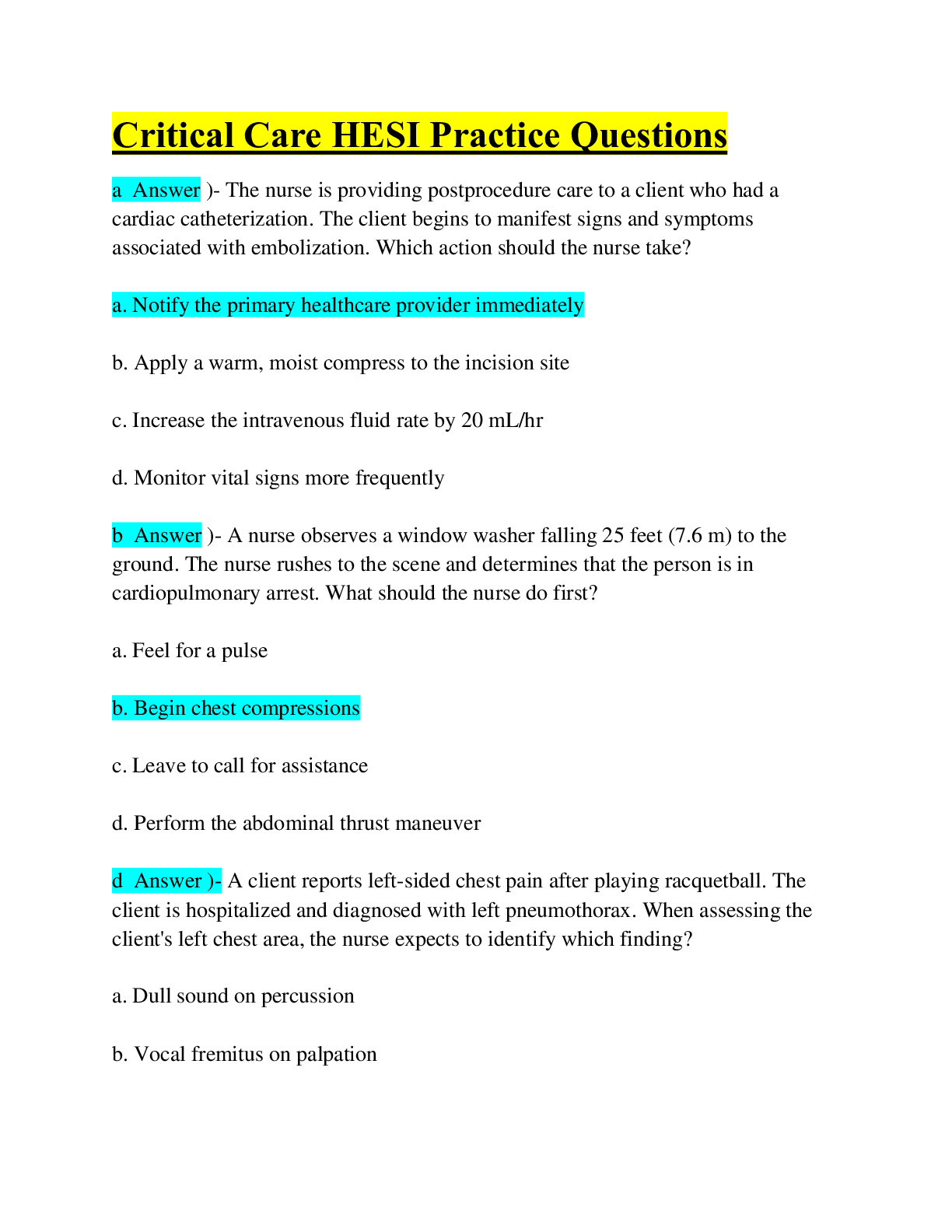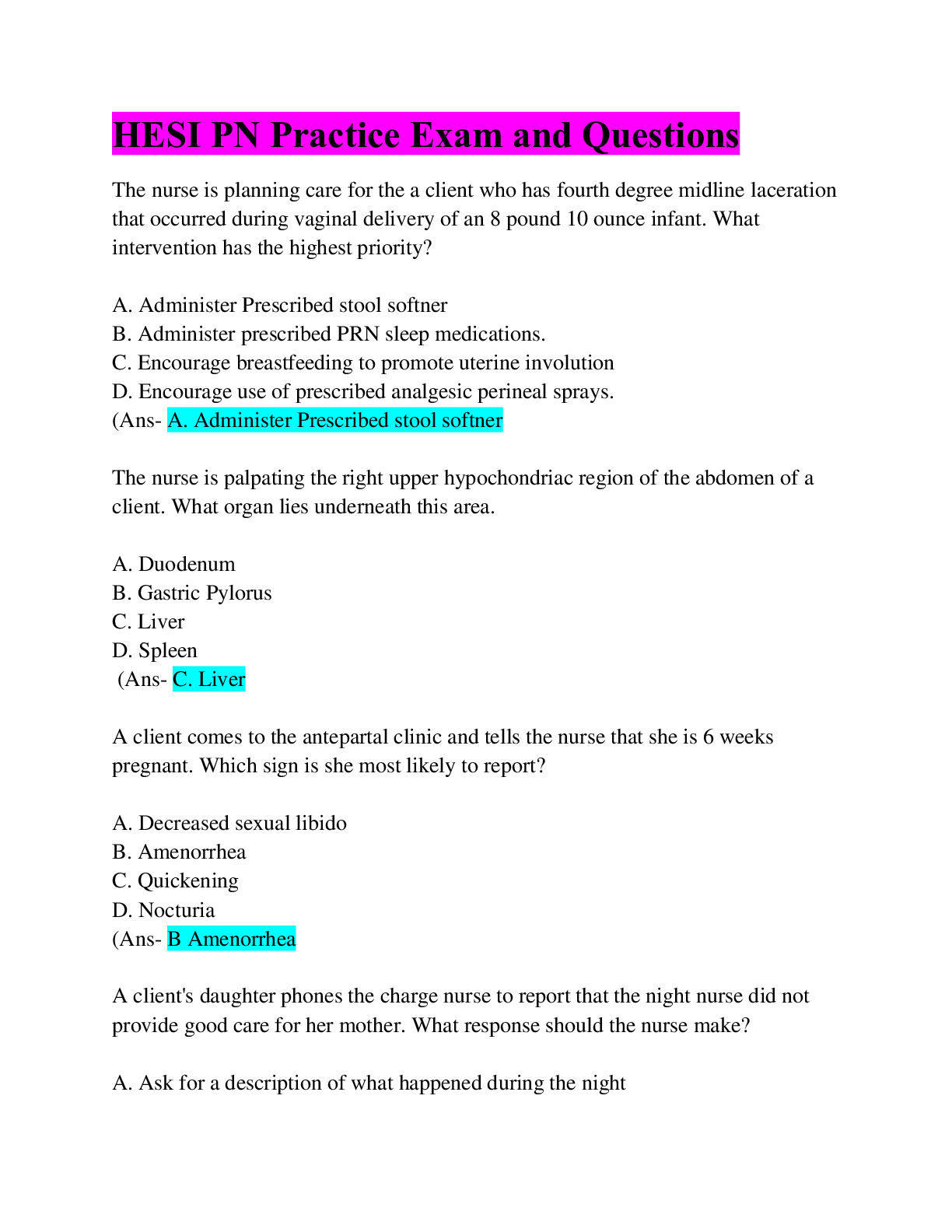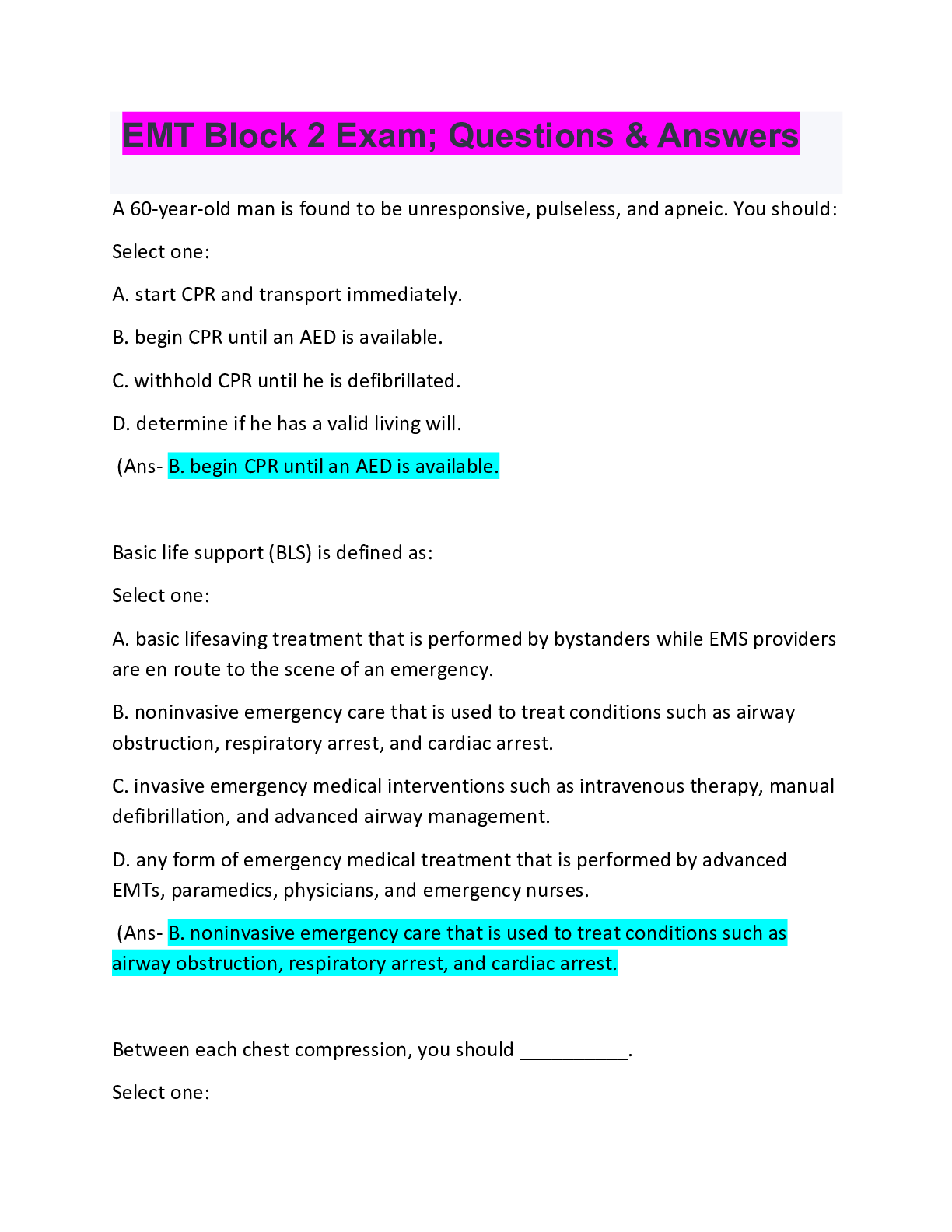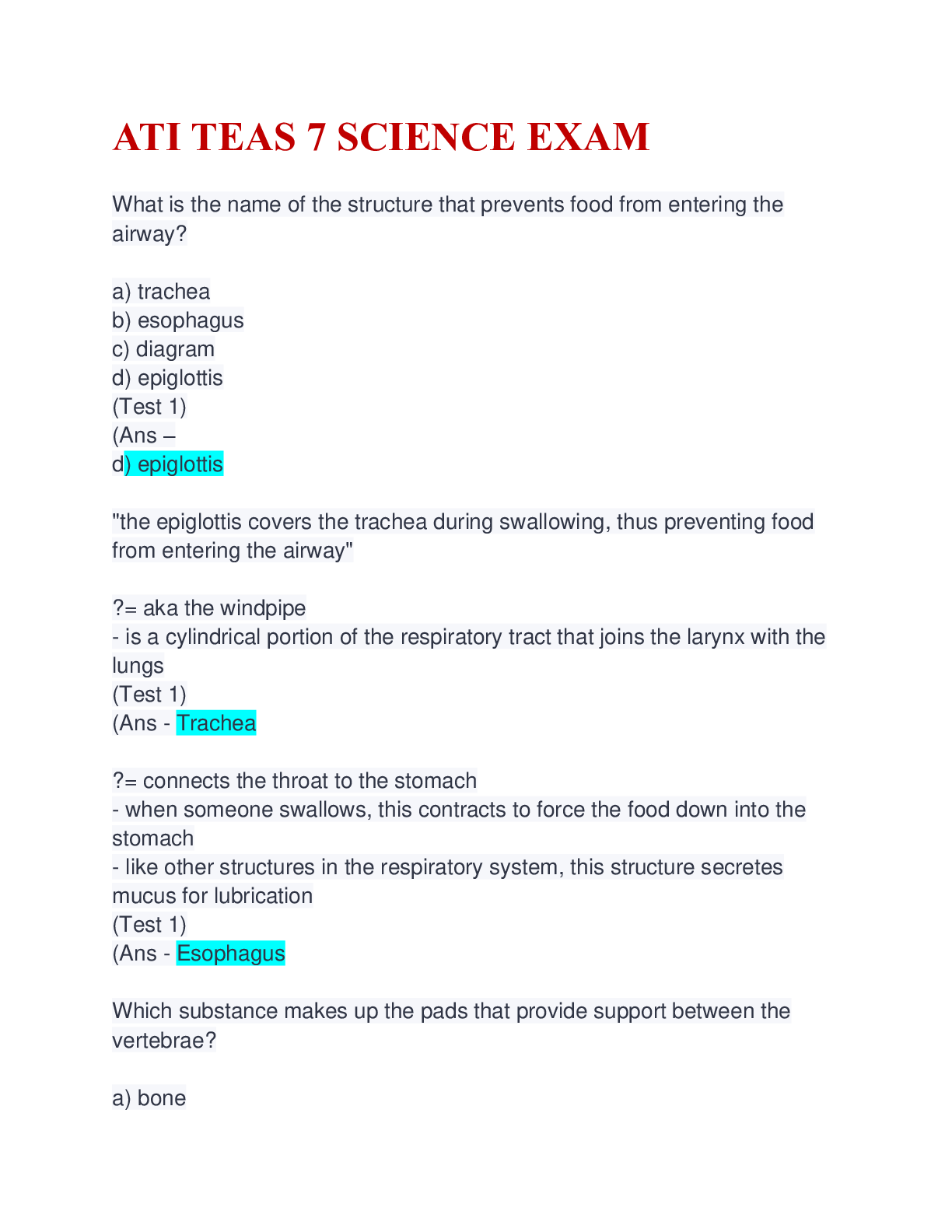Health Care > EXAM > Test Bank Complete For Maternal Child Nursing 6th Edition: Maternal Child Nursing 6th Edition: By E (All)
Test Bank Complete For Maternal Child Nursing 6th Edition: Maternal Child Nursing 6th Edition: By Emily Slone McKinney : 55 Chapters: Updated A+ Score Solution : 100% Verified
Document Content and Description Below
Which factor significantly contributed to the shift from home births to hospital births in the early 20th century? a. Puerperal sepsis was identified as a risk factor in labor and delivery. b. For... ceps were developed to facilitate difficult births. c. The importance of early parental-infant contact was identified. d. Technologic developments became available to physicians. ANS: D Technologic developments were available to physicians, not lay midwives. So in-hospital births increased in order to take advantage of these advancements. Puerperal sepsis has been a known problem for generations. In the late 19th century, Semmelweis discovered how it could be prevented with improved hygienic practices. The development of forceps is an example of a technology advance made in the early 20th century but is not the only reason birthplaces moved. Unlike home births, early hospital births hindered bonding between parents and their infants. PTS:1 DIF: Cognitive Level: Remembering OBJ:Integrated Process: Teaching-Learning MSC:Client Needs: Safe and Effective Care Environment 2. Family-centered maternity care developed in response to a. demands by physicians for family involvement in childbirth. b. the Sheppard-Towner Act of 1921. c. parental requests that infants be allowed to remain with them rather than in a nursery. d. changes in pharmacologic management of labor. ANS: C As research began to identify the benefits of early extended parent-infant contact, parents began to insist that the infant remain with them. This gradually developed into the practice of rooming-in and finally to family-centered maternity care. Family-centered care was a request by parents, not physicians. The Sheppard-Towner Act of 1921 provided funds for state-managed programs for mothers and children. The changes in pharmacologic management of labor were not a factor in family-centered maternity care. PTS:1 DIF: Cognitive Level: Remembering OBJ:Integrated Process: Teaching-Learning MSC:Client Needs: Psychosocial Integrity 3. Which setting for childbirth allows the least amount of parent-infant contact? a. Labor/delivery/recovery/postpartum room b. Birth center c. Traditional hospital birth d. Home birth ANS: C In the traditional hospital setting, the mother may see the infant for only short feeding periods, and the infant is cared for in a separate nursery. While this is slowly changing, to more closely resemble other birthing models, the traditional hospital birth still offers the least amount of parent-infant contact. The labor/delivery/recovery/postpartum room setting allows increased parent-infant contact. Birth centers are set up to allow an increase in parent-infant contact. Home births allow an increase in parent-infant contact. PTS:1 DIF: Cognitive Level: Remembering OBJ:Nursing Process: Planning MSC:Client Needs: Health Promotion and Maintenance 4. The maternity nurse should have a clear understanding of the correct use of a clinical pathway. One characteristic of clinical pathways is that they a. are developed and implemented by nurses. b. are used primarily in the pediatric setting. c. set specific time lines for sequencing interventions. d. are part of the nursing process. ANS: C Clinical pathways are standardized, interdisciplinary plans of care devised for patients with a particular health problem. They are used to identify patient outcomes, specify timelines to achieve those outcomes, direct appropriate interventions and sequencing of interventions, include interventions from a variety of disciplines, promote collaboration, and involve a comprehensive approach to care. They are developed by multiple health care professionals and reflect interdisciplinary care. They can be used in multiple settings and for patients throughout the life span. They are not part of the nursing process but can be used in conjunction with the nursing process to provide care to patients. PTS:1 DIF: Cognitive Level: Remembering OBJ:Nursing Process: Planning MSC:Client Needs: Safe and Effective Care Environment 5. A nurse wishes to work to reduce infant mortality in the United States. Which activity would this nurse most likely participate in? a. Creating pamphlets in several different languages using an interpreter. b. Assisting women to enroll in Medicaid by their third trimester. c. Volunteering to provide prenatal care at community centers. d. Working as an intake [Show More]
Last updated: 6 months ago
Preview 1 out of 386 pages
Instant download

Buy this document to get the full access instantly
Instant Download Access after purchase
Add to cartInstant download
Reviews( 0 )
Document information
Connected school, study & course
About the document
Uploaded On
Dec 02, 2023
Number of pages
386
Written in
Additional information
This document has been written for:
Uploaded
Dec 02, 2023
Downloads
0
Views
58




